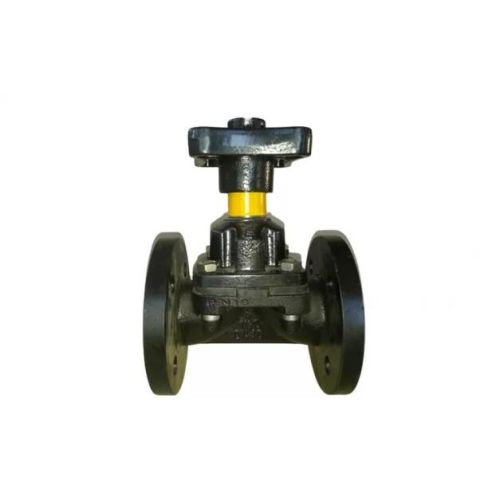Weir Type Diaphragm Valve
Weir Type Diaphragm Valve
Product Description
Design BS5156:1985, R-01
Face to Face: DIN3202-F1,BS5156,R-01
Testing: BS6755 Part1
Medium: Water, oil, acids, slurry, air....
Weir Type Diaphragm Valve Manufacturer
What is a weir diaphragm valve?
The Weir type diaphragm valve is a type of valve under diaphragm valves. This is one of the most popular of all diaphragm valves. Weir type diaphragm valve has a raised saddle or lip where the diaphragm part presses to produce sealing action. Due to the raised lip, the level of diaphragm travel reduces from opening fully to a completely closed position. As such, the induced stress on the diaphragm due to closing the valve decreases. The diaphragm is made of strong material making it suitable for high pressure and vacuum applications. Weir type diaphragm valves perform very well in control of fluid flow, throttling, and control of minute flow rates. Weir type diaphragm valves use a two-piece compressor to create a small opening at the valve center. Weir type diaphragm valves are often used to handle homogeneous and clean liquids and gases since contamination and viscous sludge can accumulate on the saddle. These valves can also work on hazardous, abrasive, and corrosive media.
Weir Type Diaphragm Valve is specifically suited to handle corrosive and general applications, it permits the larger options of linings and diaphragm grades to be combined. Given the shorter valve stroke, it is the preferred option to fluoropolymers lining and the only design suiting to PTFE diaphragms.
CNM VALVE is the leading Weir Type Diaphragm Valve Manufacturer in China, our weir diaphragm valves allow for more diaphragm cycles with less running and downtime costs, its pocketless design avoids line fluid contamination. Weir valves are the option when flow control is required.
How does weir type diaphragm valve work?
The weir type diaphragm valve utilizes a flexible diaphragm that is linked to a compressor. The compressor, in turn, is connected to a stem. When there is a need to increase the flow rate, the stem is raised. As the stem moves upward, it imparts the motion to the connected compressor. Consequently, the compressor also moves upward, causing the diaphragm to rise. This upward movement of the diaphragm results in an increased flow of fluid.
Conversely, to decrease the flow rate or completely halt the flow, the stem is turned and lowered. The downward motion of the stem is transmitted to the compressor, which then applies pressure on the diaphragm, causing it to move downward. This downward movement of the diaphragm either reduces the flow rate or completely shuts off the fluid flow.




